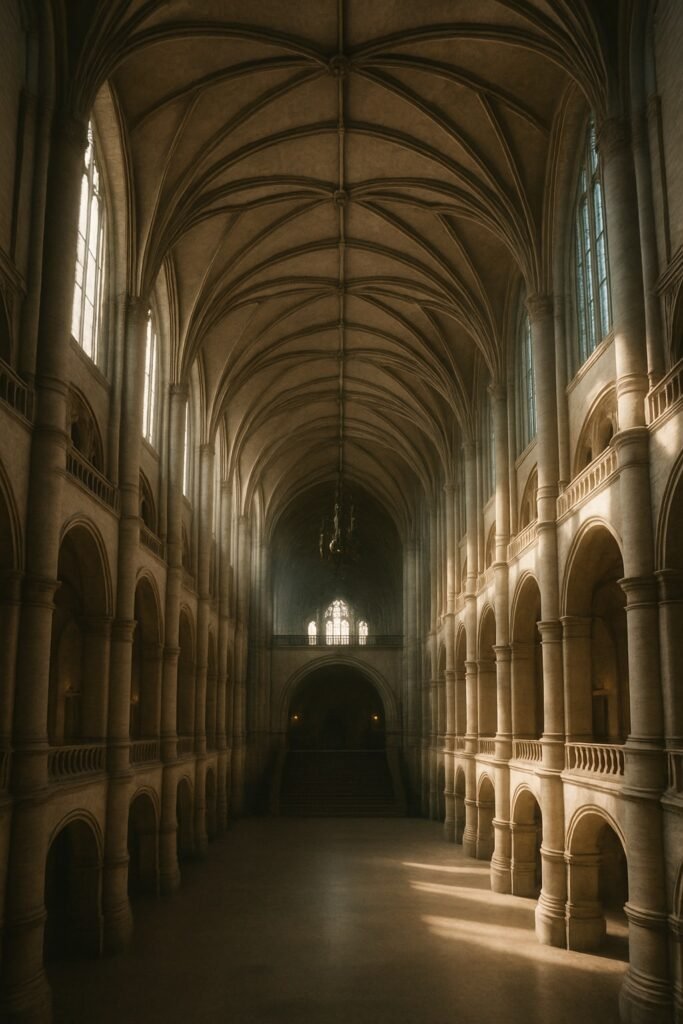There’s something uniquely captivating about a quiet weekend in Stockholm—especially when the city’s hustle slows just enough to invite you to explore its many treasures. On one such afternoon, I decided to visit the Nordiska Museet, a place that never ceases to stir my curiosity. The museum, an imposing piece of architecture perched on the shores of Djurgården, has a grandeur that reflects the history it holds within. As I approached the building, with its intricate stonework and towering spires, I felt as if I were stepping into a different era—an era where every corner seemed to whisper stories from the past.
But Nordiska Museet is far from being just an architectural marvel; inside, it holds a treasure trove of artifacts that trace the cultural and social evolution of Sweden. I didn’t intend to see everything in one go, but rather to immerse myself in a few specific exhibits that caught my eye, each offering a window into a different chapter of Swedish life and history.
Table Settings Exhibit: A Reflection of Society
One of the first exhibits that truly drew me in was the Table Settings display. Walking through this section felt like flipping through a series of snapshots—each table setting representing a moment in time, a reflection of changing social norms and domestic values. The exhibit spans several centuries, with each setting revealing the evolving tastes, from rustic farm dinners to sophisticated, ornate tables of the upper class.
I was particularly struck by how the choice of materials, the arrangement of plates, and even the design of the utensils spoke volumes about the class structures and family dynamics of their respective times. Some of the tables, with their delicate china and crystal glasses, spoke of opulence and formality, while others, simpler in their design, hinted at practicality and intimacy. This exhibit resonated deeply with me, as it tied perfectly to my interest in the concept of lifestyle—how we arrange our homes, our meals, and our gatherings speaks so much about who we are and where we come from. The act of setting a table, after all, is a small but powerful ritual of connection.
Folk Costumes: A Tapestry of Tradition
Next, I wandered into the Folk Costumes exhibit. The beauty of the traditional Swedish costumes, with their vibrant colors and intricate embroidery, never fails to take my breath away. Each piece felt like a living piece of history—carefully crafted by skilled hands, representing not just a region or a time, but a deeply personal connection to heritage and identity. The attention to detail in the stitching, the choice of fabric, and the patterns used was nothing short of mesmerizing.
What struck me most was the sense of personality that these garments conveyed. In many ways, they felt like a physical manifestation of the wearer’s identity, culture, and even personal style. The costumes spoke of a time when fashion was intimately tied to one’s sense of community, status, and tradition, yet they still carry a sense of timeless beauty. It reminded me of the powerful relationship between personal style and cultural identity—how our clothing choices, even today, can be a reflection of who we are, where we come from, and what we want to say to the world around us.
50s Apartment: A Step Back in Time
As I moved on, I was drawn to the recreated 1950s apartment. It was almost like stepping into a time capsule, with every detail faithfully preserved, from the patterned wallpaper to the vintage furniture. The sense of nostalgia in the room was palpable. The simple, yet functional design of the space was a stark contrast to the chaos and clutter we often associate with modern living.
Walking through the apartment, I couldn’t help but imagine what life was like during that time—the small, intimate moments spent in such a cozy, well-curated space. It was a reminder that design is not just about aesthetics; it’s about how we shape our environments to enhance our lives. The 50s apartment made me reflect on how design, whether it’s in our homes, our workspaces, or even our wardrobes, is inherently linked to our values, our comforts, and our way of living.
A Reflection on Design and Culture
This afternoon at Nordiska Museet left me with a deeper understanding of how fashion, design, and culture are intertwined. They are not mere expressions of beauty but records of history, social change, and the ways in which we navigate the world around us. The museum, in all its magnificence, isn’t just a place to see artifacts—it’s a place to feel them, to experience the stories they carry, and to reflect on how they connect us to our past.
Conclusion
If you’re ever in Stockholm, I encourage you not to think of museums as just tourist spots or historical archives. They are living spaces, offering glimpses into the heart of a culture. The Nordiska Museet, with its treasures and exhibits, is a perfect example of how design, history, and everyday life are all part of the same story. So, next time you find yourself wandering through this beautiful city, take a moment to step into the past—and let it inspire your present.
Exploring a museum is not just about observing, it’s about feeling, reflecting, and discovering new dimensions of the world around you. And trust me, it’s well worth it.
